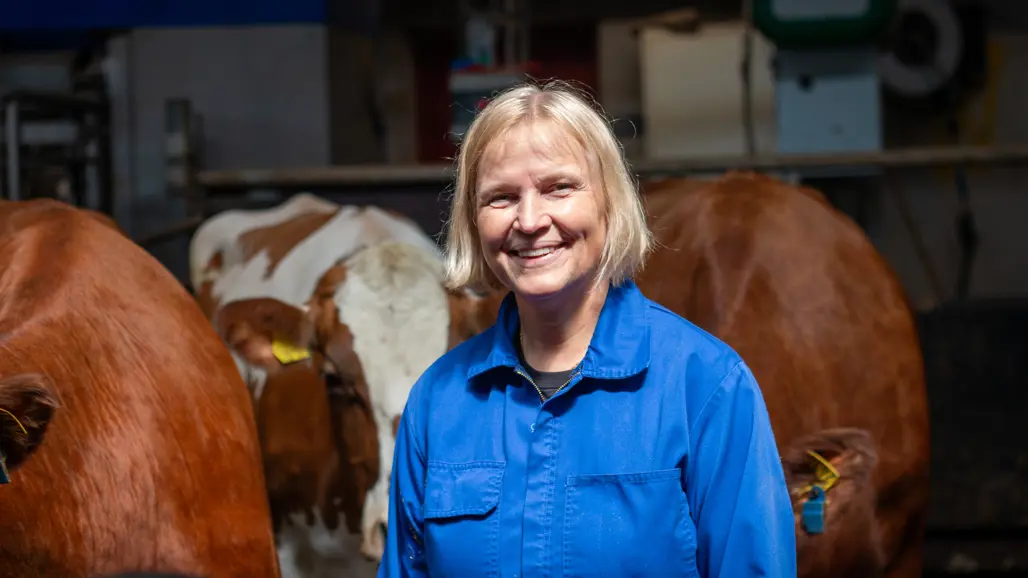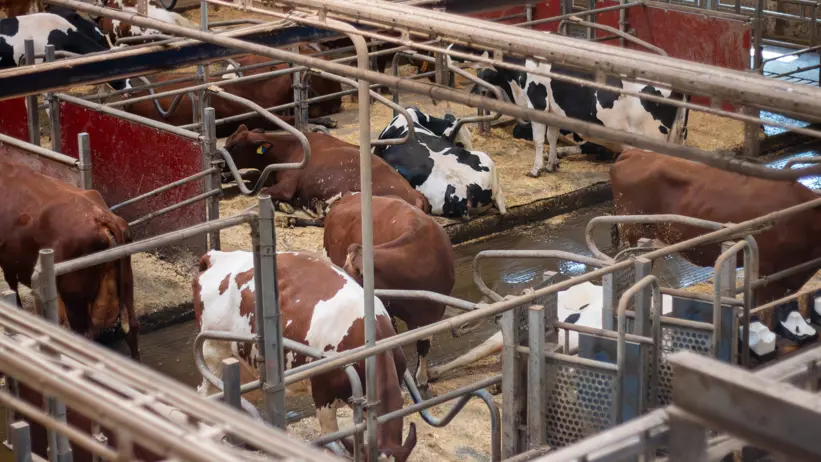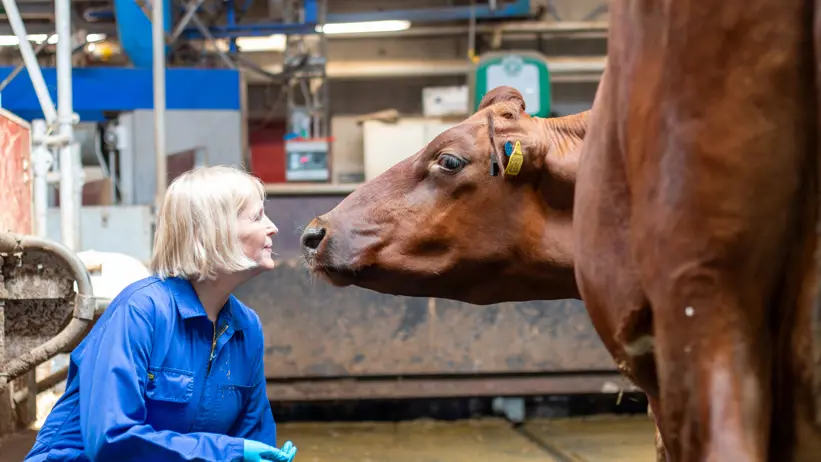
Animal welfare controls - but how? Progress towards better welfare for Swedish dairy cows
To ensure the welfare of dairy cows in Sweden there is legislation and controls on dairy farms. But are today's animal welfare controls really optimally designed to understand and monitor the physical and mental well-being of cows? These are questions asked by research - that have now been answered.
There are almost 300 000 dairy cows in Sweden. Since 2009, the County Administrative Board has been responsible for animal welfare inspections of these farm animals. The task of the County Administrative Boards is to check compliance with legislation and thus ensure good animal husbandry.
But of course, how well the control reflects animal welfare depends on what is being measured.
Today's inspections: Welfare from a man's or a cow's point of view?
Today, the animal welfare inspections concern, for example, the animals' housing facilities, cleaning practices, body condition and cleanliness. But how specific are these measures? And what is the most important for animal welfare?
Let's take it from the top.

The Swedish Board of Agriculture's checklist is used to assess whether a farm meets the statutory requirements during animal welfare inspections. But there are also other protocols used to check animal protection and welfare. The protocol used depends on who is carrying out the inspection.
Those who inspect dairy cows and farms for the government may be called animal welfare officers, animal welfare controllers or animal welfare inspectors, depending on which County Administrative Board in Sweden they work for. But the role is the same, and the Swedish Board of Agriculture checklists are used at every inspection.
Who assesses matters
Yes, it actually does.
To find out whether this statement is true, the research project investigated how different professional categories assess the body condition and cleanliness of cattle. With the aim to find out if and how profession, education and experience influence assessments.
However, the results of an animal welfare inspection also depend on the protocol:
Using such a “black and white” system proves to have its limitations. For some measures, for example if the space for the cows is large enough, it is easy to categorize it as fulfilled or not fulfilled, but for other measures this is not always the case:
Request from the European Commission
The use of more animal-based parameters in official animal welfare controls has been requested from the European Commission. Thus, the need to review and develop animal welfare protocols has become increasingly important.
However, what are animal-based parameters, and how do we ensure that animal welfare controls take this into account in the future?
– In simple terms, it can be explained that the protocols today are based very much on aspects of the animals' environment rather than signals from the animals," says Birgitta Staaf Larsson and continues:
– So, through the work on this project, we have investigated how we can evaluate the animals and thereby judge whether they are doing well or not.

The issue of water is one that is becoming increasingly important; partly because more dairy cows are kept in loose housing rather than tied up. Loose housing systems may create social hierarchies where some animals are not allowed to drink, and partly because in the future we may have to manage water as a resource even more.
Therefore, the research team has also conducted various tests using equipment such as thermometers, thermal imaging cameras and milk samples to find the best way to measure both temperature and water content of each individual cow. A challenge, but one that has led to progress.
The future: towards better farm animal care and even smarter robots
After many years of work, the project is now coming to an end, and for those who are curious, there are several scientifically published articles to read.
This may be possible in the future through changes in the animal welfare controls, where this research project is now proposing several practical and animal-friendly suggestions. But also through technological developments:

Facts:
Explanation of terms:
PhD student = A research student who is trained and involved in a research project for four years. After passing the examination, the person is awarded the title of doctor in the subject, which is the highest academic degree in Sweden.
About the project:
- The PhD position is funded by Svenska Djurskyddsföreningen and has been ongoing part time during the period 2014-2025.
- Doctoral student in the project is Birgitta Staaf Larsson, together with a research team consisting of:
- Main supervisor for the project 2022-2025 Anna Jansson, Professor of Anatomy and Physiology at the Swedish University of Agricultural Sciences, SLU.
- Main supervisor for the project 2014-2011 Margareta Stéen, Associate Professor of Wild Animal Health at SLU.
- Kristina Dahlborn, assistant supervisor and professor emerita of integrative physiology at SLU.
- and Jan Hultgren, assistant supervisor 2014-2021 and associate professor of animal science at SLU.
The elements of the project can be broadly described as:
- To compare three different protocols (official controls with two others) on 41 dairy farms around Sweden to see how the farms are evaluated by the different protocols.
- To study how different categories of professions assess body condition and dirty cattle. A survey in which 569 people participated, all with some connection to the assessment of animals but with different professions and levels of experience.
- To find ways to measure the two concepts of thermal comfort (comfortable body temperature) and hydration status in dairy cows.
Contact
-
PersonBirgitta Staaf Larsson, PhD-studentHBIO, Anatomy and Physiology